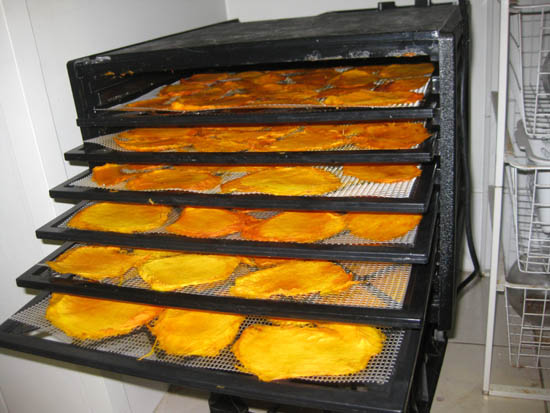Despite a whole lot promises and some $120 million donor dollars invested in the domestic mango industry over a period of 20 years, as of 2015, Haiti had no new mango processing facilities. A 2012 TNS feasibility study showed that a Coca Cola supported juice and pulp processing factory would be profitable only after 10 years, and even then contingent on a host of unlikely what-if’s. A drying operation in Gros Morne closed in 2012 after the USDA– citing hygiene concerns–blocked importation of dried mango from Haiti.[i] A drying operation that was begun in Mirebalais—started under US $127 million USAID funded and Chemonics implemented Feed the Future program (USAID/WINNER) –closed its doors after several months of operation (see Chemonics Mango Travesty). The one drying operation that already existed—ORE’s EU funded drying operation in Les Cayes area — has declined in output almost to the point of closure (see below). And no new juice factories. In fact, Haiti has only one mango juice factory, down from at least two that existed 15 years ago. No pulp factories. In short, when it comes to the processing of mangos, the situation has gotten worse.[ii]
So what’s up with that? Why?
We can gain some insight from the experiences of Dr. Mousson Pierre Finnigan,
In 2006 the European Union funded ORE-USA (Organisation for the Réhabilitation of the Environment) to begin drying mangos with the ultimate goal of exporting them. The operation was successful, at least on the local market. CEO of ORE, Dr. Finnigan, the Haitian woman who oversaw the project, reported that ORE has always sold all the dried mangos they produce on the local market. The demand even outside of Haiti is “huge.” But ORE has never sold dried mangos outside of Haiti. In explaining why, Dr Finnigan–Haitian National, 2009 winner of Haiti’s “Femmes de Mérite” award, founding CEO of an organization that has worked hand and hand with the Haitian State for 30 years spending in excess of $10 million of donor money, a woman who most people who have met her would agree “exudes honesty” (see Moodie 2010)–described trying to get the Ministry of Commerce to explain the license export process as “frustrating.” As of 2015, she’d been trying for 9 years.
(for references and more data see here)
Notes
[i] Whether the Gros Morne drying operation would have succeeded or not, the assistant mayor of Gros Morne, Rubin Beauger, complained to Nouvelliste journalists that, “The problem of hygiene as raised by the United States to prevent the sale and consumption of dried mango from Haiti is non-existent. It’s a slap in the face to the Haitian people.”
[ii] Assumptions relevant to processing that were in the IDB/MIF (2010) document
- The technology required for large scale processing of mango is not available in Haiti today.
- Investment in mango processing is hampered by limited access to finance and logistical services, unpredictable supply and lack of market linkages.
- Several exporters are interested in investing in such technology but lack access to credit.
- TCCC strong potential for TCCC and its Latin Center Business Unit to be able to purchase a portion of the mango fruit juice
- Company would make in-kind investments including juice processing knowledge, capital investments and research and development expertise.
Elsewhere in the MIF design:
Component 2: Foster competitive local processing businesses (MIF: US$398,824; Counterpart: US$326,311) 3.8 Local processing could increase the economic value of Haiti’s mango industry significantly. It would provide an alternative market channel for mango rejects and clear incentives to producers to increase their production. The objective of this component is to provide support to local entrepreneurs in establishing new processing factories – including helping them with business planning and capital raising, per their needs. TCCC’s local and international supply chains and markets will provide support in this effort and will help identifying the currently available varieties best suited for processing into fruit juice both for the domestic market and for export. The lead entrepreneurial investors would be most likely local traders or processors of other goods. 3.9 Support to local institutions, organizations and entrepreneurs will be given through technical assistance to: (i) establishing new processing factories – including feasibility studies, business planning and capital-raising assistance, per their needs – and design the right mechanism to include local ownership; and (ii) explore the viability of introducing new mango varieties for processing.
3.10 Expected outcomes include: (a) at least one processing plant operating with local participation; (b) PBGs selling directly to processing plant(s); and (c) processing plants fully compliant with international environmental standards.








